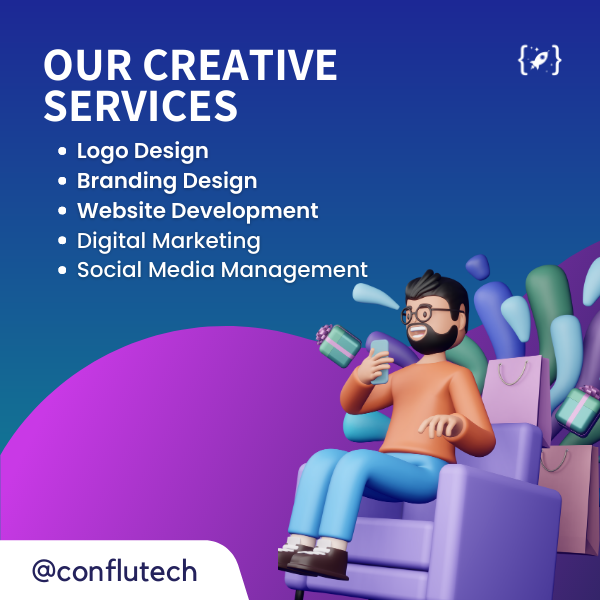Buckle up, innovators! The startup journey isn’t just about having a brilliant idea—it’s about turning that spark into a blazing innovation that disrupts markets and solves real-world problems. In today’s hyper-connected digital landscape, startups are no longer just small businesses; they’re potential game-changers armed with technology and audacious vision.
Consider this: Only 8% of startups will receive venture capital funding, which means your tech stack isn’t just a luxury—it’s your competitive lifeline. Whether you’re a solo entrepreneur working from a coffee shop or a lean team in a co-working space, the right technological infrastructure can mean the difference between becoming the next unicorn or fading into obscurity.
“Build something 10x better.” – A mantra that separates extraordinary startups from the ordinary.
The modern startup ecosystem demands more than just passion—it requires strategic technological integration, scalable solutions, and an agile approach to problem-solving. Your tech stack is essentially the nervous system of your entrepreneurial body, transmitting signals, processing information, and enabling rapid adaptation in an increasingly complex business environment.
In this deep-dive exploration, we’ll unravel the essential technological frameworks that transform promising startup ideas into robust, market-ready solutions. Get ready to decode the blueprint of technological success that can elevate your venture from a mere concept to a potential industry disruptor.
Understanding the Modern Startup Technology Landscape
In the dynamic world of startups, technology isn’t just a tool—it’s the rocket fuel that propels innovative ideas into transformative businesses. The modern startup technology landscape is a complex ecosystem where agility, efficiency, and strategic integration define success.
Gone are the days when entrepreneurs could rely on traditional business models. Today’s startup founders navigate a digital terrain that demands rapid adaptation, scalable solutions, and intelligent technological frameworks. Your tech stack is more than a collection of software and tools—it’s the strategic backbone that determines your startup’s potential to innovate, compete, and ultimately thrive.
The Evolution of Startup Technology
Remember when startups operated with basic spreadsheets and email? Those days are long gone. The contemporary entrepreneurship landscape is powered by sophisticated, interconnected technological ecosystems that enable:
- Real-time collaboration across global teams
- Automated workflow management
- Data-driven decision-making
- Scalable cloud infrastructure
- Advanced analytics and predictive modeling
“Measure what matters.” – A principle that transforms raw data into strategic insights.
The technological revolution has democratized startup capabilities. Small teams can now access enterprise-grade tools that were once exclusive to large corporations. Cloud computing, artificial intelligence, and sophisticated SaaS platforms have leveled the playing field, allowing innovative minds to compete with industry giants.
Key Technological Paradigms Reshaping Startup Strategies
Modern startups are embracing technological paradigms that go beyond traditional software implementation. These aren’t just tools—they’re strategic frameworks that enable unprecedented levels of innovation, efficiency, and market responsiveness.
- Microservices Architecture: Enables flexible, modular system design
- Serverless Computing: Reduces infrastructure management overhead
- AI-Powered Automation: Streamlines repetitive tasks and enhances productivity
- Distributed Systems: Supports global scalability and resilience
The technological landscape for startups is no longer about having the most expensive tools—it’s about strategic integration, adaptability, and leveraging technologies that amplify your unique value proposition. As the startup ecosystem continues to evolve, those who master this intricate technological dance will be the ones who truly stand out.
Core Technology Foundations for Startup Success
When it comes to building a rock-solid technological foundation for your startup, think of your tech stack as the DNA of your digital organism. It’s not just about selecting fancy tools—it’s about creating a harmonious ecosystem that can adapt, scale, and grow faster than a caffeine-powered entrepreneur’s heartbeat.
Let’s break down the core technology foundations that can transform your startup from a scrappy idea to a potential market disruptor. These aren’t just recommendations; they’re strategic blueprints that have powered countless successful startups from garage projects to global platforms.
Development and Infrastructure Backbone
Your technological foundation starts with choosing the right development environment and infrastructure that provides flexibility, scalability, and robust performance. Here’s what smart startups are prioritizing:
- Cloud Services: Platforms like AWS, Google Cloud, and Azure offer scalable infrastructure that grows with your startup
- Containerization: Docker and Kubernetes enable seamless deployment and management of applications
- Version Control: Git and GitHub for collaborative coding and version tracking
Productivity and Collaboration Tools
In the fast-paced world of entrepreneurship, communication and collaboration aren’t just nice-to-haves—they’re survival mechanisms. The right toolkit can transform your team’s productivity from good to extraordinary.
- Project Management: Platforms like Asana, Trello, and Monday.com for streamlined workflow
- Communication: Slack, Microsoft Teams for real-time team interaction
- Collaborative Docs: Google Workspace and Notion for seamless document sharing
Pro tip: Choose tools that integrate smoothly. Your tech stack should feel like a well-oiled machine, not a collection of disconnected gadgets. The goal is creating a technological ecosystem that amplifies your team’s natural strengths and compensates for potential weaknesses.
Data and Analytics Powerhouse
In today’s data-driven landscape, startups that measure, analyze, and adapt are the ones that survive and thrive. Your data infrastructure is like a sophisticated radar system, helping you navigate complex market dynamics with precision.
- Customer analytics platforms like Mixpanel and Amplitude
- Business intelligence tools such as Tableau and PowerBI
- Machine learning frameworks for predictive insights
Remember, data isn’t just numbers—it’s the narrative of your startup’s journey. By implementing smart analytics, you’re not just collecting information; you’re creating a strategic roadmap for growth and innovation.
“Innovation distinguishes between a leader and a follower.”
Your tech stack is more than a collection of tools—it’s the nervous system of your startup. Choose wisely, integrate strategically, and watch as your technological foundation becomes the launchpad for extraordinary entrepreneurial success.
Critical Software and Platform Recommendations
Let’s dive into the software and platform recommendations that can transform your startup from a concept to a powerhouse. Think of these tools as your digital Swiss Army knife—versatile, reliable, and absolutely essential for navigating the complex terrain of modern entrepreneurship.
Development and Coding Platforms
For startups looking to build robust technological solutions, the right development ecosystem is crucial. Here are the platforms that are giving innovative teams a competitive edge:
- Backend Frameworks:
- Node.js for scalable server-side applications
- Django for Python-powered web development
- Ruby on Rails for rapid prototyping
- Frontend Technologies:
- React.js for dynamic user interfaces
- Vue.js for lightweight and flexible applications
- Angular for enterprise-level web solutions
“The best technology stack is the one that solves your specific problem, not the one that’s most hyped.”
Cloud and Infrastructure Solutions
Your infrastructure is the foundation that supports your entire technological ecosystem. Smart startups are leveraging cloud platforms that offer flexibility, scalability, and cost-effectiveness:
- Cloud Providers:
- Amazon Web Services (AWS) for comprehensive cloud solutions
- Google Cloud Platform for AI and machine learning integration
- Microsoft Azure for enterprise-level cloud services
- Deployment and Scaling:
- Heroku for easy application deployment
- Docker for containerization
- Kubernetes for advanced container orchestration
Productivity and Collaboration Powerhouses
In the world of entrepreneurship, your team’s ability to collaborate seamlessly can make or break your startup. These platforms are game-changers in team productivity:
- Project Management:
- Asana for task tracking and team coordination
- Jira for agile development workflows
- ClickUp for comprehensive project management
- Communication Tools:
- Slack for real-time team communication
- Zoom for virtual meetings and collaboration
- Notion for integrated workspace management
“Technology is best when it brings people together and makes collaboration effortless.”
Data and Analytics Ecosystem
In today’s data-driven landscape, the right analytics tools can provide insights that transform your startup’s strategic decision-making:
- Business Intelligence:
- Mixpanel for user analytics
- Google Analytics for comprehensive web insights
- Tableau for advanced data visualization
- Customer Relationship Management:
- Salesforce for enterprise-level CRM
- HubSpot for integrated marketing and sales
- Intercom for customer communication
Pro tip: Your tech stack should be a living, breathing ecosystem. Regularly audit and update your tools to ensure they continue to meet your startup’s evolving needs. Remember, the right technology isn’t about having the most expensive tools—it’s about having the most effective ones for your unique journey.
Budget-Conscious Technology Strategy
Let’s get real about technology spending for startups: every dollar counts, and your budget isn’t just a constraint—it’s an opportunity for strategic creativity. In the world of startups, being budget-conscious doesn’t mean being cheap; it means being brilliantly resourceful.
The Smart Startup’s Technology Investment Philosophy
Imagine your technology budget as a precision instrument, not a bottomless wallet. The key is maximizing impact while minimizing unnecessary expenditure. Modern entrepreneurship demands a laser-focused approach to technological investments that deliver maximum bang for your buck.
- Open-Source Solutions: Leverage free, community-driven tools that professional developers have meticulously crafted
- Freemium Models: Start with free tiers and scale as your startup grows
- Modular Approach: Build a flexible tech stack that allows incremental upgrades
“Bootstrapping isn’t about doing things cheap—it’s about doing things smart.”
Strategic Cost-Cutting Techniques
Budget-conscious doesn’t mean feature-poor. Here are tactical strategies to build a robust technological infrastructure without breaking the bank:
- Cloud Cost Optimization:
- Use reserved instances for predictable workloads
- Implement auto-scaling to minimize idle resources
- Regularly audit and trim unnecessary cloud services
- Development Efficiency:
- Adopt agile methodologies to reduce development waste
- Prioritize minimum viable product (MVP) approaches
- Utilize cross-functional team members
Essential Low-Cost Technology Tools
Your startup doesn’t need a million-dollar tech arsenal. These budget-friendly tools can supercharge your technological capabilities:
- Development:
- Visual Studio Code (free professional code editor)
- GitHub (free repository hosting)
- Firebase (free backend-as-a-service)
- Productivity:
- Trello (free project management)
- Slack (free communication tier)
- Google Workspace basic plans
“Innovation has no price tag—just strategic thinking.”
Pro tip: Your technology strategy should be a living document. Regularly reassess your tools, negotiate better rates, and never be afraid to switch platforms that no longer serve your evolving startup needs. Remember, the most expensive technology isn’t always the best—the smartest technology is the one that solves your specific challenges efficiently.
Budget constraints aren’t limitations; they’re opportunities for innovative problem-solving. By adopting a strategic, lean approach to your tech stack, you’re not just saving money—you’re building a resilient, adaptable technological foundation that can scale alongside your entrepreneurial vision.
Security and Compliance Considerations
In the high-stakes world of startups, security isn’t just a checkbox—it’s your digital fortress. One data breach can obliterate years of hard work, trust, and reputation faster than you can say “cybersecurity incident”. For modern entrepreneurs, understanding and implementing robust security protocols isn’t optional; it’s existential.
The Cybersecurity Landscape for Emerging Businesses
Startups are increasingly attractive targets for cybercriminals. Why? Because they often lack sophisticated security infrastructure while potentially holding valuable data and intellectual property. Your security strategy needs to be as agile and innovative as your business model.
- Implement multi-factor authentication
- Use encrypted communication channels
- Develop comprehensive data protection policies
- Regularly conduct security audits
“In the digital age, your security is only as strong as your weakest link.”
Compliance: More Than Just Paperwork
For entrepreneurship in regulated industries, compliance isn’t bureaucratic red tape—it’s a strategic advantage. Understanding frameworks like GDPR, HIPAA, and SOC 2 can differentiate your startup as a trustworthy, professional organization.
- Data Privacy Essentials:
- Implement transparent data collection practices
- Create clear user consent mechanisms
- Develop robust data retention and deletion policies
- Regulatory Compliance Strategies:
- Conduct regular compliance assessments
- Train team members on regulatory requirements
- Document all compliance efforts meticulously
Cost-Effective Security Solutions
Security doesn’t have to mean astronomical expenses. Smart startups leverage strategic, scalable security solutions that grow with their business:
- Cloud Security Tools:
- AWS Security Hub
- Google Cloud Security Command Center
- Azure Security Center
- Low-Cost Security Platforms:
- Cloudflare for web protection
- Auth0 for authentication management
- Okta for identity and access control
“Prevention is cheaper than recovery—especially in cybersecurity.”
Pro tip: Consider cybersecurity insurance and develop a comprehensive incident response plan. Your security strategy should be proactive, not reactive. Treat it like a core business function, not an afterthought.
Remember, in the digital ecosystem, trust is your most valuable currency. By prioritizing security and compliance, you’re not just protecting data—you’re building a foundation of credibility that can attract investors, partners, and customers who see your startup as a professional, responsible innovator.
Future-Proofing Your Technological Infrastructure
In the rapidly evolving landscape of startups, future-proofing your technological infrastructure isn’t just a strategy—it’s your survival mechanism. Think of your tech stack as a living, breathing organism that must continuously adapt, learn, and transform to stay ahead of market dynamics.
Emerging Technologies Reshaping Startup Ecosystems
The technological horizon is shifting faster than ever. Entrepreneurship today demands more than just keeping up—it requires anticipating and integrating cutting-edge technologies that can provide unprecedented competitive advantages.
- Artificial Intelligence: Predictive analytics and intelligent automation
- Blockchain: Decentralized security and transparent transactions
- Edge Computing: Faster, more distributed computational capabilities
- Quantum Computing: Revolutionary problem-solving potential
“The best way to predict the future is to create it.” – A mantra for technological innovation
Adaptive Architecture Strategies
Future-proofing isn’t about predicting every technological shift—it’s about building an infrastructure flexible enough to absorb and integrate emerging innovations seamlessly. Your technological foundation should be modular, scalable, and inherently adaptable.
- Microservices Architecture:
- Enables independent component development
- Facilitates easier upgrades and replacements
- Supports rapid technological evolution
- Cloud-Native Technologies:
- Kubernetes for container orchestration
- Serverless computing frameworks
- Distributed system design
Continuous Learning and Technological Agility
In the startup world, technological stagnation is equivalent to strategic surrender. Cultivating a culture of continuous learning and technological exploration becomes your most potent competitive weapon.
- Invest in ongoing team skill development
- Allocate resources for technological research
- Encourage experimental technology adoption
- Create innovation-friendly organizational structures
“Innovation distinguishes between a leader and a follower.” – A reminder of technology’s transformative power
Strategic Technology Investment Principles
Future-proofing isn’t about chasing every technological trend, but making calculated, strategic investments that align with your startup’s core vision and market potential.
- Evaluation Criteria:
- Scalability potential
- Integration capabilities
- Long-term cost-effectiveness
- Alignment with business objectives
- Risk Mitigation Strategies:
- Phased technology implementation
- Pilot testing of new technologies
- Maintaining technological diversification
Pro tip: Your technological infrastructure should be a strategic asset, not a cost center. Regularly audit your tech stack, remain curious about emerging technologies, and be prepared to pivot when innovation demands it.
Remember, future-proofing isn’t about having all the answers—it’s about building a technological ecosystem resilient and intelligent enough to discover those answers continuously. Your startup’s ability to adapt, learn, and transform will be your ultimate competitive advantage in an increasingly complex digital landscape.










